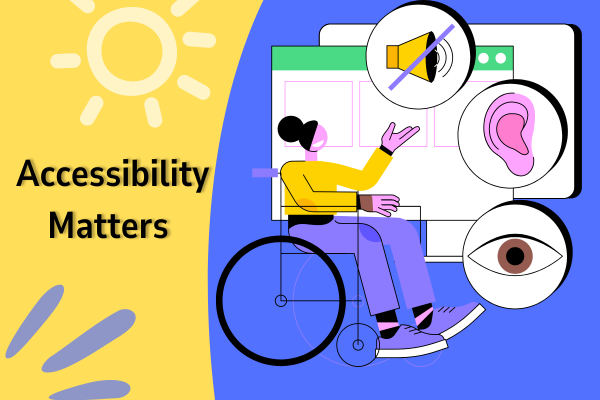The internet should be for everyone. Yet, millions of people with disabilities struggle to access websites due to poor accessibility practices. This not only excludes a significant portion of the population, but it also hinders businesses from reaching a wider audience. Here’s why building accessible websites is crucial, and how to implement inclusive design principles.
Why Accessibility Matters
Accessibility isn’t just about ticking a box. It’s about creating a website that everyone, regardless of ability, can navigate and use effectively. This includes people with visual impairments, hearing loss, motor limitations, cognitive disabilities, and more. Here’s what’s at stake:
Equal Access: An accessible website ensures everyone can access information, resources, and opportunities available online.
Enhanced User Experience: Good accessibility practices often lead to a better user experience for everyone, not just those with disabilities. Clear navigation, simple language, and keyboard accessibility benefit all users.
Wider Audience: By making your website accessible, you tap into a vast market of potential customers and clients you might have otherwise missed.
Legal Compliance: Many countries have regulations mandating a certain level of website accessibility.
Inclusive Design: Building Websites for All
Here are some key principles to follow for inclusive design:
Clear and Simple Design: Use clean layouts, uncluttered pages, and high color contrast for optimal readability.
Alternative Text for Images: Provide descriptive text for images (alt text) so screen readers can convey the image’s content to visually impaired users.
Keyboard Accessibility: Ensure all website functions can be accessed and operated using just the keyboard, catering to users with motor limitations.
Descriptive Links: Use clear and concise link text that accurately describes the destination page. Don’t rely solely on icons or generic terms like “click here.”
Closed Captions and Transcripts: For video and audio content, provide closed captions and transcripts for users who are deaf or hard of hearing.
Building a More Inclusive Web
By prioritizing accessibility, you create a website that’s welcoming and usable for everyone. There are numerous online resources and tools available to help you assess and improve your website’s accessibility. Remember, a truly successful website doesn’t leave anyone behind. Let’s work together to build a more inclusive web experience for all.

